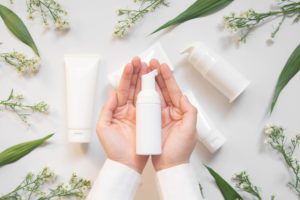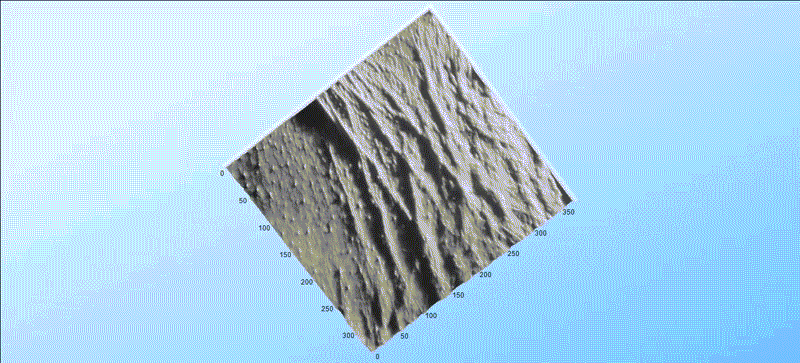TODAY’S INDUSTRY
Being professionally involved with cosmetic products can be very rewarding. In most countries the cosmetic industry is experiencing steady growth and cosmetics hold an important place in people’s everyday life (both children and adults). In such a fast paced market, there is always room for new products to be developed, which either through their innovation or their marketing have the potential to become best sellers. Today’s consumers are more keen to learn and understand about products, and many of them buy based on informed decision. On the other side, successful cosmetic companies display deep understanding of customer’s needs when creating and or marketing a product.
MAKING CLAIMS
Once new products are launched, to survive in such a competitive market cosmetic products need to provide customers with the ability to quickly recognise their benefits. It is very effective for cosmetic products to drive consumer interest by stating and emphasising their particular features. This is referred to as “making a claim”. Cosmetic product claims have been well defined in Europe as any public information on the content, the nature, the effect, the properties or the efficacy of the product1. Claims can be made in different ways. They can consist of words but also images and can be represented in any product material or form of marketing.
FALSE CLAIMS ARE DAMAGING OUR INDUSTRY
As clinical research professionals, over the years we have sometimes come across claims associated with cosmetic advertising presented in the printed media, on-line or product packaging in Australia, which are either:
- conveyed incorrectly (e.g. inconsistency with the definition of cosmetic product); or
- clearly not sustained by appropriate level of evidence or data; or
- not sustainable at all (i.e. pseudo-science).
Along with the skilled researchers, there is a growing portion of the general public who is starting to question some of those ads as well. Cosmetic claims that are not substantiated often lead to false and misleading advertising, which is damaging consumers’ confidence as well as fair competition. It also sends the wrong message to other cosmetic marketers that feel you can ‘get away’ with making false claims. It can indirectly impact also on other industries, such as the pharmaceutical industry, where advertising is under a lot more regulatory scrutiny.
CONSUMER PROTECTION
In Australia cosmetic advertisement and consumer protection are the responsibility of the Australian Competition and Consumer Commission (ACCC). The ACCC addresses the issue of ‘false or misleading representations’ by stating: “It is unlawful for a business to make false or misleading representations about goods or services when supplying, offering to supply, or promoting those goods or services”2. On several occasions, the view of the commission has been that businesses are free to make claims in the promotion of their products, “as long as their claims are truthful and have a reasonable basis”. “Consumers should have confidence that they are able to rely on product information provided by businesses when selecting products to purchase.” […] “Businesses have a responsibility to ensure that accurate information is given to consumers about the performance characteristics and benefits of their products. This is particularly the case where consumers may pay a premium to purchase products that are promoted as delivering particular benefits”3. In essence businesses have a corporate responsibility to make sure any claims they make are accurate and backed by adequate scientific and/or technical evidence.
CONSUMER COMPLAINT
Where the corporate responsibility of a cosmetic company is lacking and the ACCC is unable to directly identify issues with certain cosmetic claims, reporting of potential breaches by third parties has traditionally proved very effective. Consumers and/or business competitors can lodge a formal complaint in writing, on the phone or on-line to the ACCC explaining the reasons for their concerns.
CAN MORE BE DONE?
However, to deal with the issue of questionable cosmetic claims, which can quickly escalate by word of mouth and provide fertile ground to more ambiguity, it seems reasonable to suggest that there is a need for cosmetic claims (and any science behind it) to be looked at more closely. In an industry that concerns so many people and is constantly called to provide more certainties to its consumers, we would like to make a call for claims substantiation expertise to be utilised to assist regulators in identifying and assessing cosmetic claims. Independent experts could also be involved in providing support as required in the decision making process.
Let’s take the opportunity to discuss how scientists and cosmetic research experts might be able to contribute in properly addressing some of the issues surrounding certain cosmetic claims. We look forward to the prospect of living in a world where there is no more room for false and misleading cosmetic advertising.
References
1 COLIPA “Guidelines for the Evaluation of the Efficacy of Cosmetic Products” (2001)
2 Australian Consumer Law, “Avoiding unfair business practices. A guide for businesses and legal practitioners” (2010)
3 ACCC Media Releases, “ACCC institutes proceedings against Dulux for alleged false and misleading paint advertising (2012)




